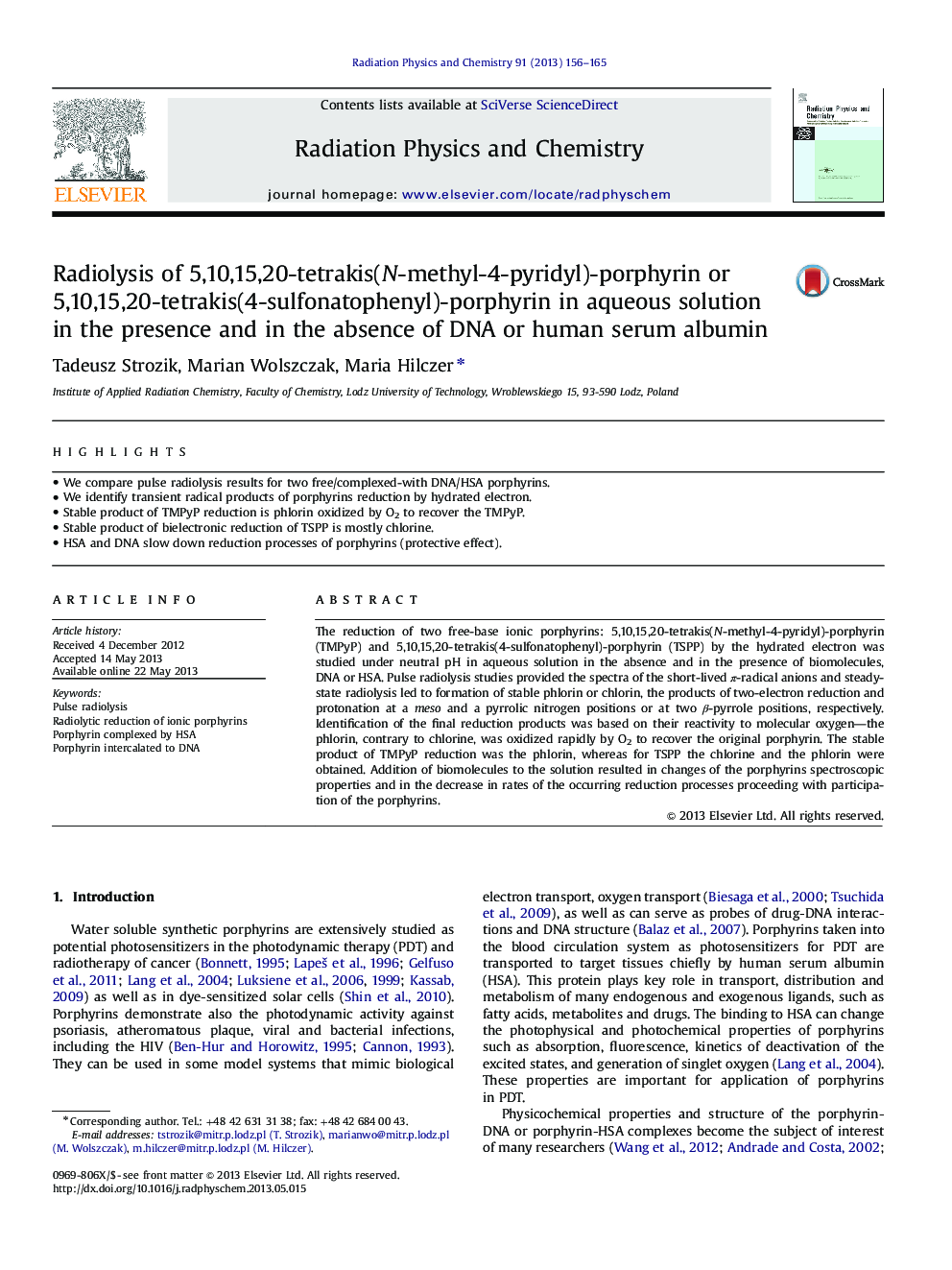| کد مقاله | کد نشریه | سال انتشار | مقاله انگلیسی | نسخه تمام متن |
|---|---|---|---|---|
| 1886223 | 1533533 | 2013 | 10 صفحه PDF | دانلود رایگان |

• We compare pulse radiolysis results for two free/complexed-with DNA/HSA porphyrins.
• We identify transient radical products of porphyrins reduction by hydrated electron.
• Stable product of TMPyP reduction is phlorin oxidized by O2 to recover the TMPyP.
• Stable product of bielectronic reduction of TSPP is mostly chlorine.
• HSA and DNA slow down reduction processes of porphyrins (protective effect).
The reduction of two free-base ionic porphyrins: 5,10,15,20-tetrakis(N-methyl-4-pyridyl)-porphyrin (TMPyP) and 5,10,15,20-tetrakis(4-sulfonatophenyl)-porphyrin (TSPP) by the hydrated electron was studied under neutral pH in aqueous solution in the absence and in the presence of biomolecules, DNA or HSA. Pulse radiolysis studies provided the spectra of the short-lived π-radical anions and steady-state radiolysis led to formation of stable phlorin or chlorin, the products of two-electron reduction and protonation at a meso and a pyrrolic nitrogen positions or at two β-pyrrole positions, respectively. Identification of the final reduction products was based on their reactivity to molecular oxygen—the phlorin, contrary to chlorine, was oxidized rapidly by O2 to recover the original porphyrin. The stable product of TMPyP reduction was the phlorin, whereas for TSPP the chlorine and the phlorin were obtained. Addition of biomolecules to the solution resulted in changes of the porphyrins spectroscopic properties and in the decrease in rates of the occurring reduction processes proceeding with participation of the porphyrins.
Journal: Radiation Physics and Chemistry - Volume 91, October 2013, Pages 156–165